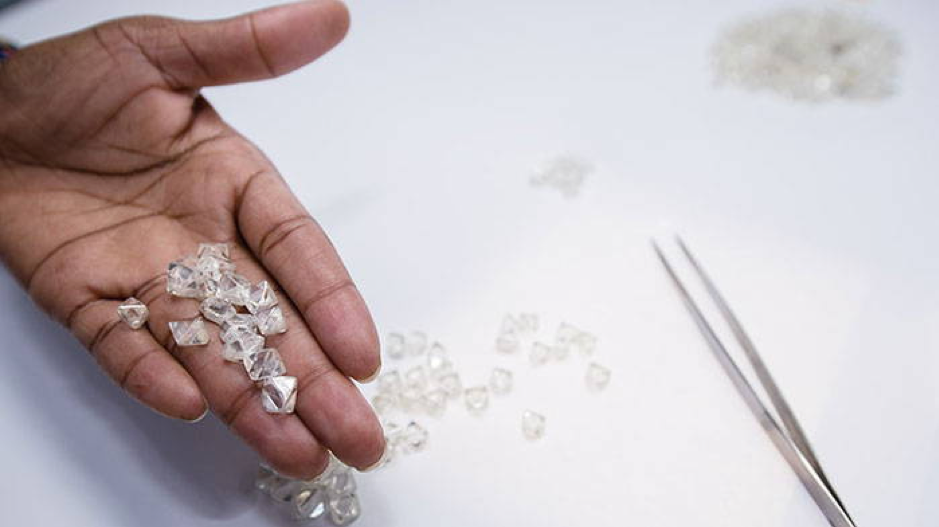
An example of a lab grown diamond rough crystal and cut gemstone
While synthetic diamonds have been around since the 1950’s, they have only recently started to be commercially produced in a gem quality suitable for jewellery. This poses many interesting questions for the jewellery industry and their potential impact on the future of the diamond market.
Initially the cost of a synthetic diamond was approximately 20% cheaper than a natural diamond, as technology has improved and supply has increased however there has been a significant fall in the cost of synthetic diamonds. In 2015, Brilliant Earth, a US online diamond retailer was selling a 2ct synthetic diamond for $22,000. In January 2019 a synthetic diamond of the same size and grade was selling for $6,800, and in October 2019 you can find a synthetic diamond with similar grading for $4,000.
Interesting comparisons can be drawn from the coloured gem stone market where synthetic ruby, sapphire and emerald have been available for decades. Initial demand created wide-spread production, the following oversupply led to value erosion with synthetic gems now worth only a few dollars. In contrast, the natural market for coloured gems has never been stronger with significant price increases as the finite nature of natural gems has limited supply driving prices higher.
Most factory produced diamond suppliers provide marketing to support the idea that their product is an eco-friendly option. Some state their stones have up to 98% less carbon emissions produced; this is based on research carried out by companies they have employed to further their own business growth. Likewise, there are studies to support the alternate view, that factory diamonds produce 3x more carbon emissions than an equivalent sized natural stone due to the need for an immense amount of water and energy required to heat and cool the industrial microwaves. In essence, both sides are able to provide statistics that support their theory and it would be sensible to consider each in this light.
Possibly the most pressing issue that increased supply of synthetic diamonds raises, is the assurance that the genuine origin of the diamond is represented accurately. Even highly skilled gemmologists cannot distinguish the difference by sight alone. Identification of factory produced diamonds requires expert technology such as the iD100 by GIA which has been shown to identify synthetic diamonds with 100% accuracy. It is more important than ever to choose a company whom you can trust and has invested in the technology and training to ensure integrity in what they are selling. 
A laboratory-grown diamond (left) and a natural diamond (right) can appear identical to the naked eye.
With more suppliers entering the market there will certainly be growth in the supply of synthetic diamonds in the future. It remains to be seen the degree to which demand from consumers will absorb this additional supply and the effect this will have on pricing. As always, the paramount consideration should be that buyers are able to trust who they are buying from and that they are able to provide accurate representations about any options being presented.











